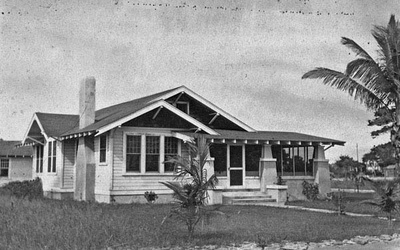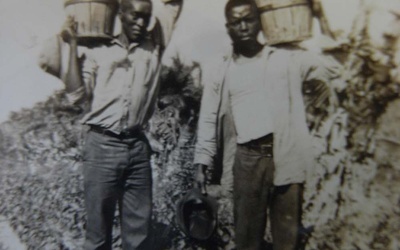A lonely longing for home - From the letters of Morikami Suketsugu, a Japanese immigrant in Florida

In the early 20th century, the Japanese village of Yamato Colony appeared in southern Florida. Morikami Sukeji (George Morikami), who immigrated from Miyazu, Kyoto City as a farmer and pioneer, is the man who laid the foundation for the Morikami Museum and Japanese Gardens, which is now located in Florida. He stayed on after the colony was dissolved and disappeared before the war, and continued farming alone through the war. He ended up donating a huge amount of land, leaving his name in the local area. He remained single throughout his life and never returned to Japan, but he was more homesick than most and continued to write letters to Japan. He corresponded frequently with the Okamoto family, including the wife and daughters of his late brother. Although he never met them, he treated them like family and sent them information about the situation and his thoughts in the area. The letters he left behind trace his life and lonely homesickness as a record of one generation.
Stories from this series

Part 6: Talking to cats and reading Japanese books
April 12, 2019 • Ryusuke Kawai
Morikami Sukeji, who came to America as a member of the Yamato Colony in South Florida and stayed there alone until the end of his life after the colony was disbanded, continued to write letters to his sister-in-law and her family after the war. While living alone, he talks to his cats. The rain destroys his crops again, but he lives with the help of his American neighbors. * * * * * Night of December 10, 1950 Mi-san, Today …

Part 5: Becoming wealthy in an instant
March 22, 2019 • Ryusuke Kawai
Morikami Sukeji, who came to America as a member of the Yamato Colony in South Florida and remained there alone until the end of his life after the colony was dissolved, continued to write letters to his sister-in-law and her family after the war. Looking back on his days after settling in the United States, he shares untold stories of his unfortunate engagement and reports on the large fortune he made during the real estate boom. * * * * …

Part 4: I want to see you
March 8, 2019 • Ryusuke Kawai
Morikami Sukeji, who came to America as a member of the Yamato Colony in South Florida and remained there alone until the end of his life after the colony was disbanded, continued to write letters to his sister-in-law and her family after the war. In his letters, he expresses his affection for them, who have become like family to him, and confides his conflicting feelings towards his sister-in-law, such as worries about their health and their future. * * * …

Part 3: Small Friends
Feb. 22, 2019 • Ryusuke Kawai
Morikami Sukeji, who came to America as a member of the Yamato Colony in South Florida and stayed there alone until the end of his life after the colony was disbanded, continued to write letters to his sister-in-law and her family after the war. At one point, the sale of a plot of land was about to be sold, but it didn't go through because of the Korean War. However, he also developed a friendship with a girl. * * …

Part 2: Cold wave and traffic accidents
Feb. 8, 2019 • Ryusuke Kawai
In the early 20th century, Yamato Colony, a Japanese village, appeared in southern Florida. Morikami Sukeji (George Morikami), who immigrated from Miyazu, Kyoto City as a farmer and pioneer, stayed on even after the colony was dismantled and disappeared before the war, and continued farming alone through the war (see Part 1 for details ). In the end, he donated a huge amount of land, leaving his name in the local area. He remained single throughout his life and never …

Episode 1: 1906: A solo journey of 8,000 ri
Jan. 25, 2019 • Ryusuke Kawai
Introduction: Yamato Colony and Morikami Sukeji At the beginning of the 20th century, Japanese people began settling in Florida, located in the southern part of the east coast of the United States. In South Florida, where there was not even a trace of Japanese people, a "Japanese village" was established as the "Yamato Colony." In this village, mainly intellectuals and wealthy people, they started growing vegetables and fruit. However, they could not continue due to the harsh natural conditions, and …


